Submitted by WA Contents
TBA designs residential extension with floating volume on a narrow plot in Montréal neighborhood
Canada Architecture News - Feb 07, 2022 - 12:06 2297 views
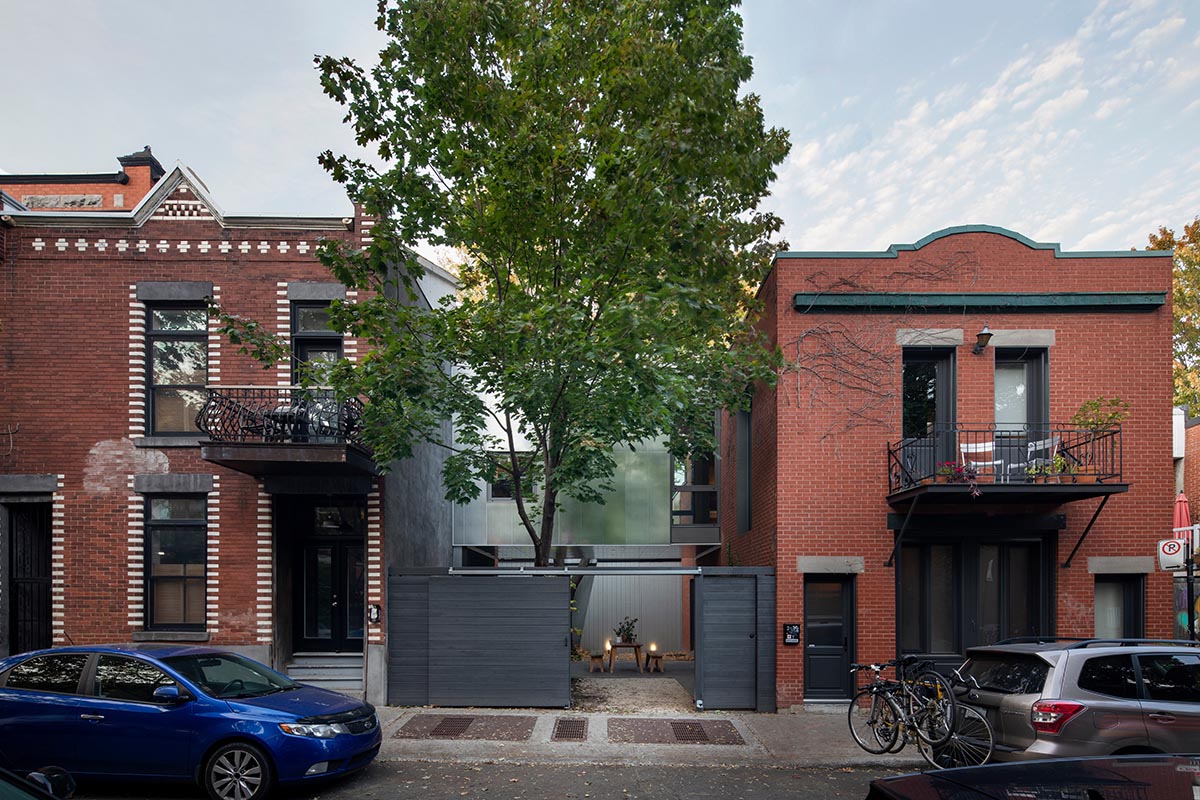
Montréal-based architecture firm TBA / Thomas Balaban Architecte has designed a small extension with a floating volume on a narrow plot in Montréal sought-after Plateau Mont-Royal neighbourhood, Canada.
Named Berri House, the 130-square-metre house was converted from a carriage house, built in 1910, to a new, modern contemporary residence extension. The existing carriage house had undergone several renovations, according to the studio.
While the studio largely preserves the exterior appearance of the existing structure, its brick facade was repaired, and windows were replaced.
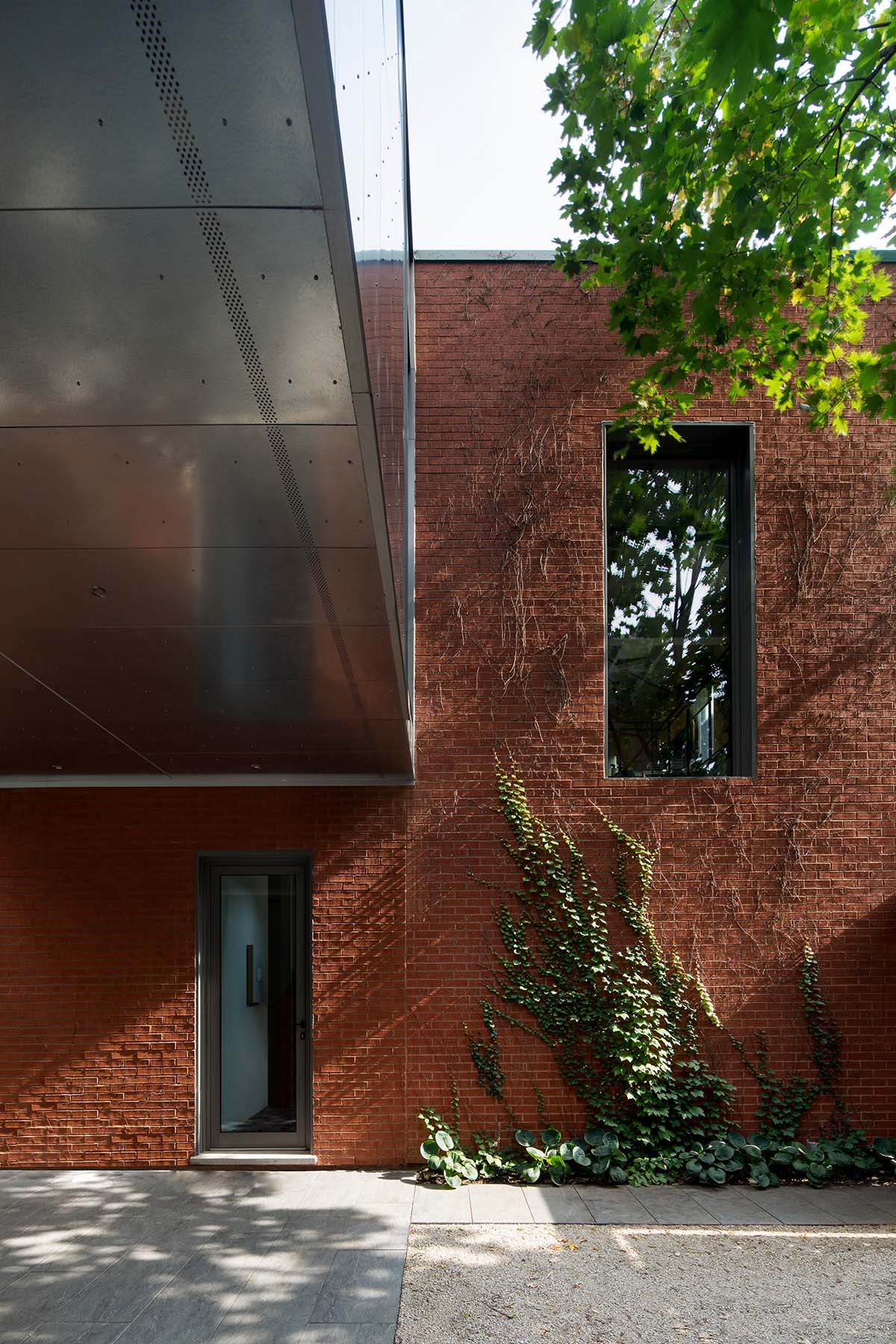
Expanding the footprint of the building was a key challenge for the project, while the studio aimed to preserve its character and its very limited outdoor space.
"The irregularly shaped lot resulted from a subdivision of a large property spanning two streets," said the studio.
"The cadastral transaction left the new lot with only a small side yard and an boxed-in exterior space at the back."
"Interesting lots such as Berri’s, corner stores, car repair shops, and small industrial buildings scattered among traditional brick duplexes and triplexes make up the area’s rich architectural heritage," the firm added.
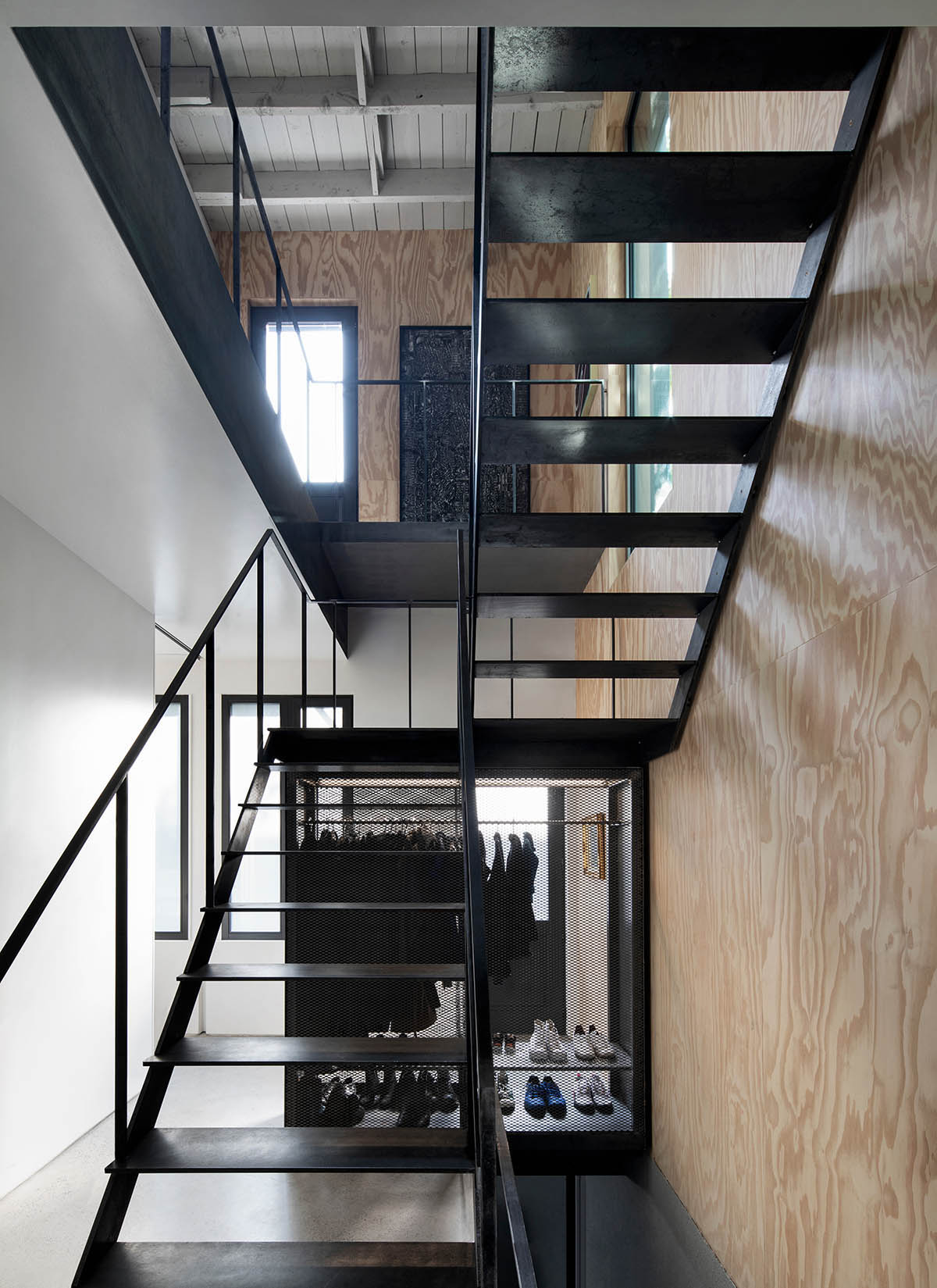
The house has earned the neighbourhood its protected status, as well as bylaws preserving its architectural character and limiting increases in height.
The new floating extension is designed on the second floor, which protects this precious outdoor space, while adding the additional breathing room a young family needed.
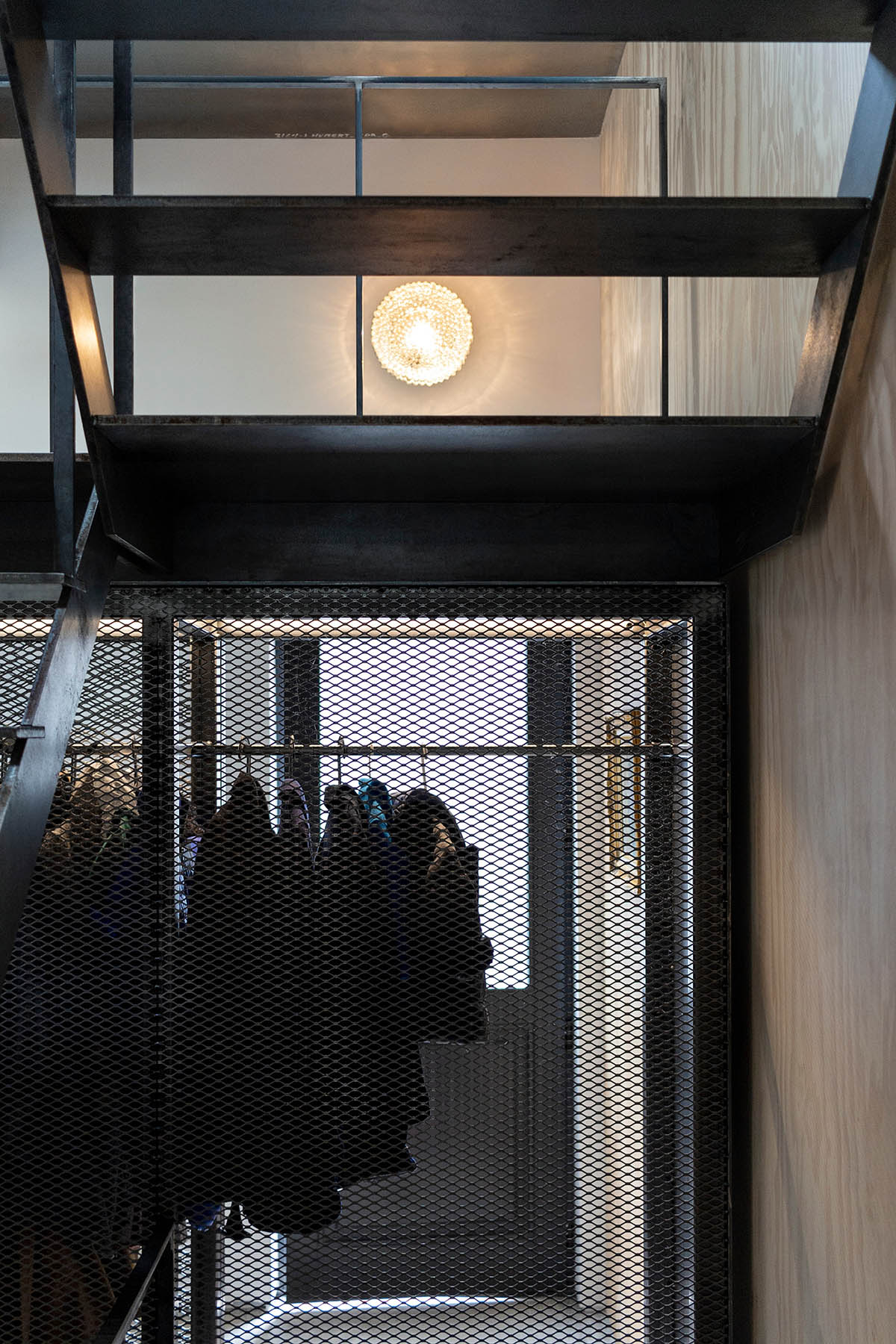
Image © TBA
The studio has set back the volume and elevated the new addition, as it yields the front and rear of the lot to its two existing mature maple trees. The position preserves the tree’s important presence in the streetscape and prevents damage to their root systems, while creating a sheltered private garden below.
The new addition is clad in flat galvanized panels, the floating volume reflects natural light into the garden below. The reflective material endows the extension with a feeling of lightness. Its flat detailing and modern geometry contrast against the brick masonry of the old building.
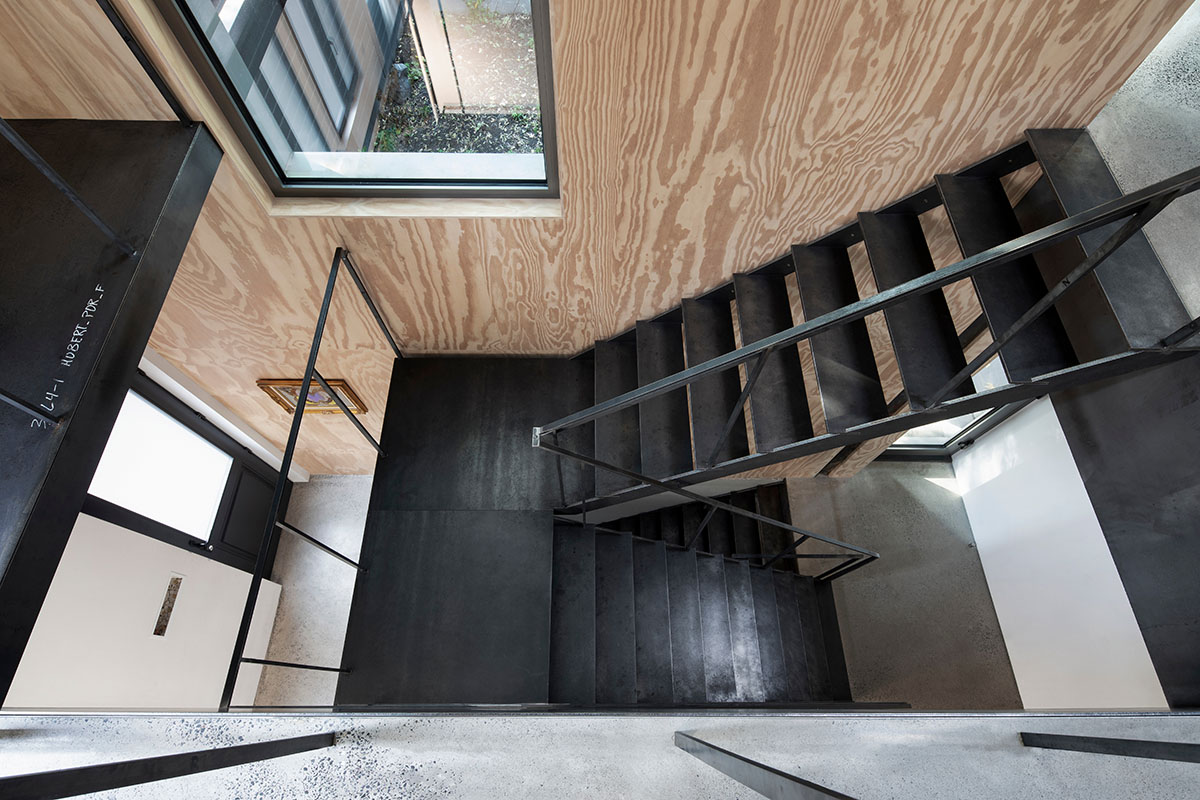
It also reduces the visual impact on adjacent houses situated in tight quarters, showcasing an abstract palette of sky and foliage. Strategically placed openings endow the living spaces with privacy, while full height windows bring much needed light into the house via open circulation spaces.
Inside, the design team removed the layers of interventions. Stripped down to the original shell of the coach house, the new interiors seek to celebrate the natural qualities of the utilitarian structure and the beauty of everyday construction.
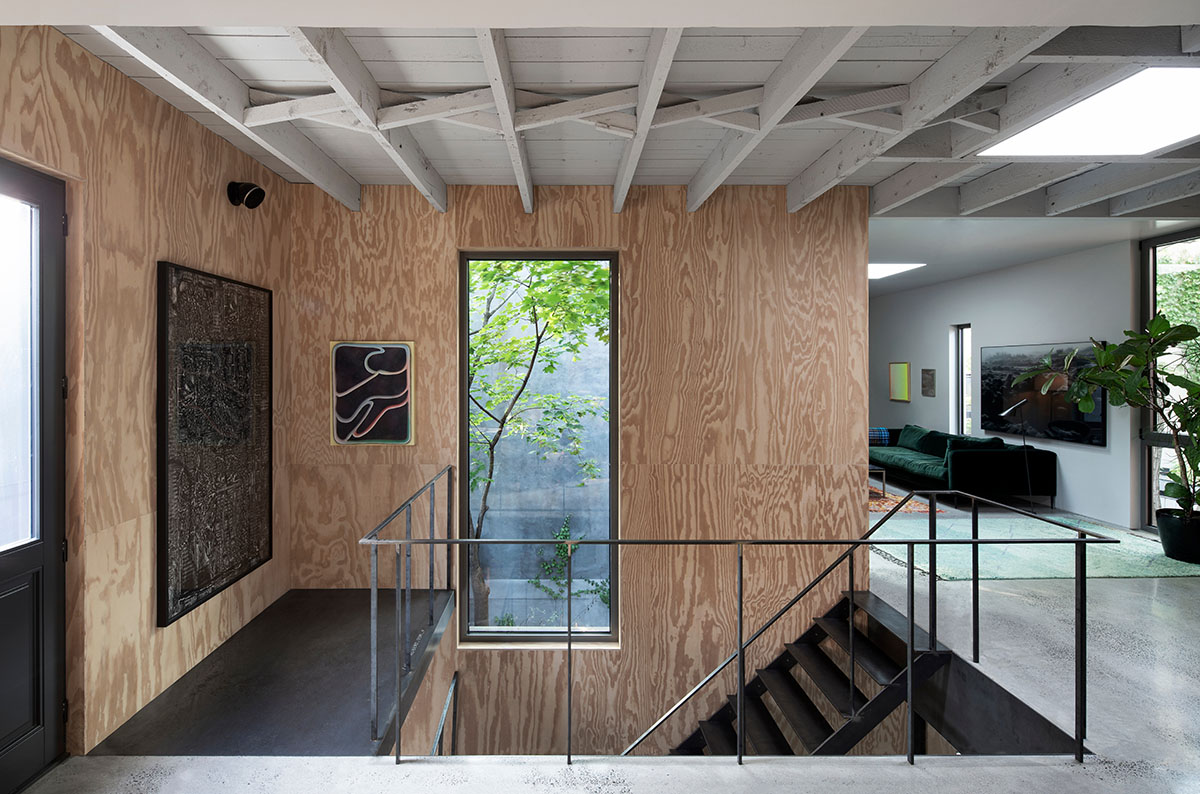
Raw materials, rich textures, and minimal detailing play off softer modern furnishings and the family’s expansive collection of art.
Plywood plays the role of wallpaper (think William Morris meets Home Depot), and steel structure imitates wood joinery, giving the project an intemporal quality where mid-century modern meets construction site in a stripped-down Victorian shell.
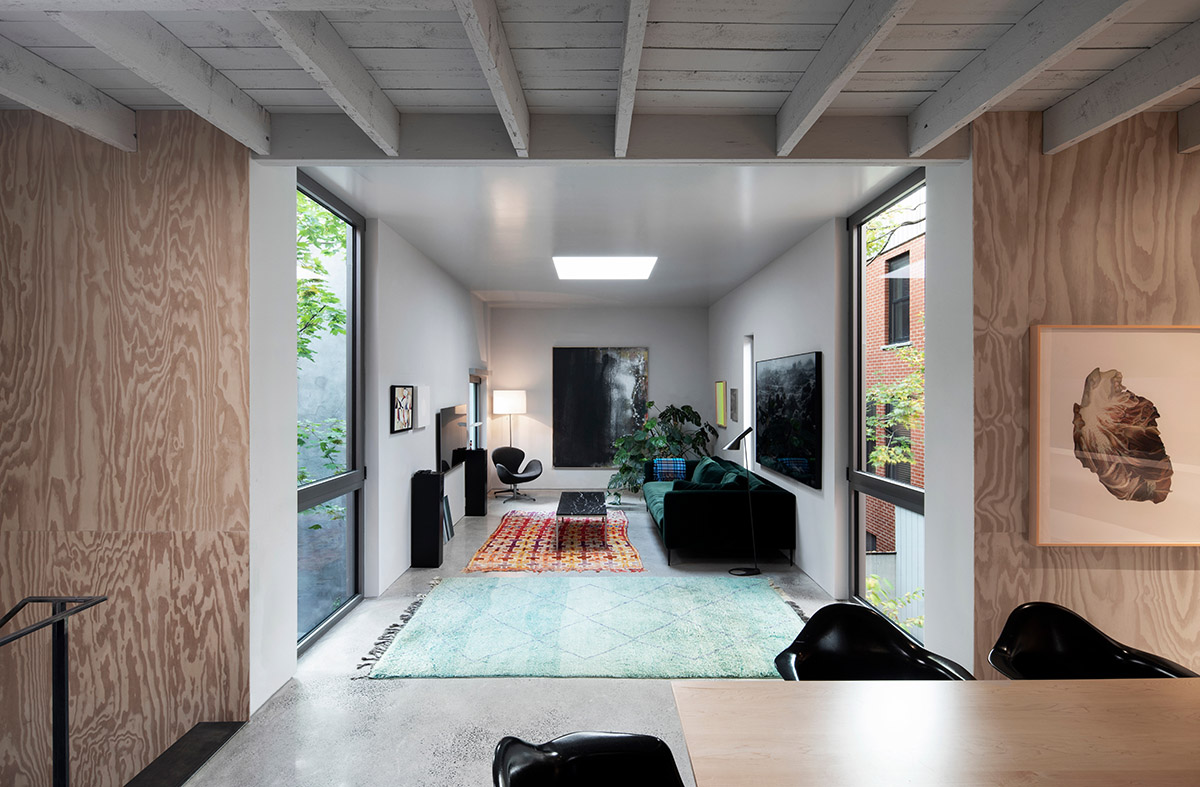
At the entrance, in the northwest corner, a new opening made through the first floor connects three levels via an ultra minimal and transparent stair. It combines entry closet, circulation, and sculptural effect.
The transparency of the wireframe stair in combination with the sliding divisions give the small footprint of the ground floor much needed space to breathe.
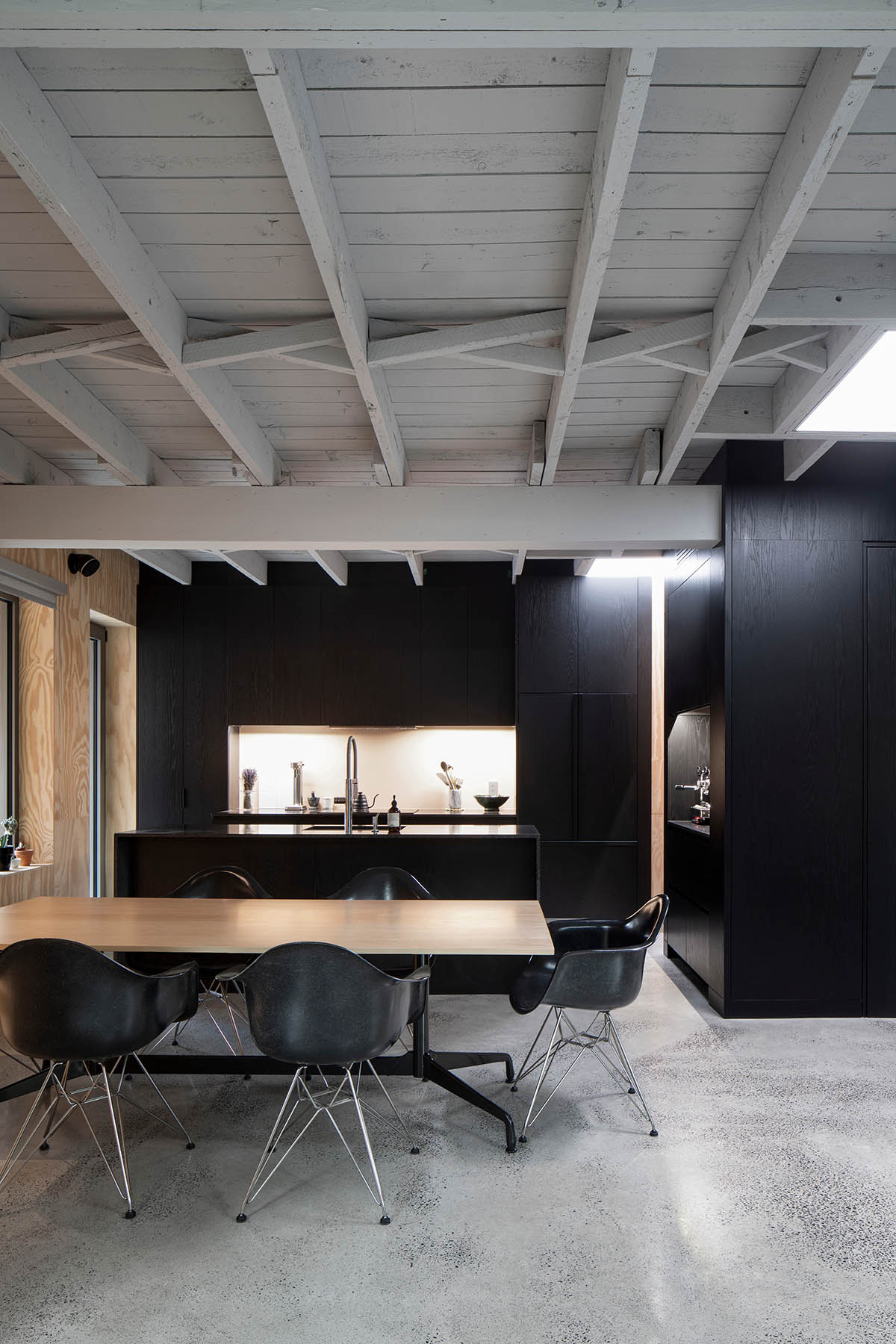
Upstairs, the kitchen, dining room, office, and stair are organized around a central structural column built out to enclose a powder-room, stationary closet, stereo equipment, and a coffee station.

The compact arrangement confers both connection and visual privacy. Strategically placed windows and existing skylights punctuate the spaces, bringing in natural light and a connection to the exterior, ultimately providing a changing, natural counterpoint to the abstract artwork and photography on display in the house.



TBA previously completed the deNormanville extension with curved and textured volume in an old family neighborhood of Montreal, Canada.
Established in 2009 by Tom Balaban, TBA works in both private and public sectors, in new construction as well as complex renovations.
Project facts
Project name: Berri House
Architects: TBA - Thomas Balaban (project lead), Maxime Lefebvre, Julia Manaças
Structural Engineer: Lateral
All images © Adrien Williams unless otherwise stated.
